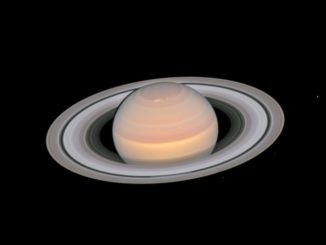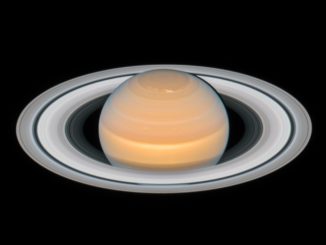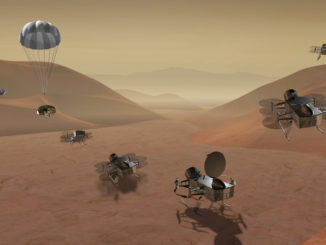
Saturn


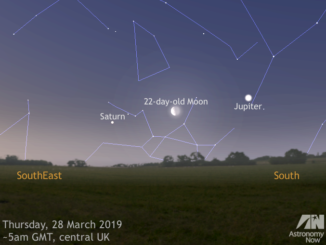
See the waning Moon meet Jupiter and Saturn at dawn, 27–29 March
For lunar and planetary enthusiasts, the only naked-eye planet of the evening sky is distant and tiny Mars in the constellation of Taurus. But if you’re prepared to be an early riser, the dawn sky is where you’ll find two of the solar system’s heavyweights, Jupiter and Saturn, getting up close with the Moon on 27 and 29 March, respectively.
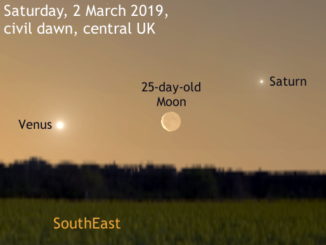
See the old Moon between Venus and Saturn at dawn on 2 March
On Saturday, 2 March 2019, observers in Western Europe should seek a location offering a level and unobstructed southeastern view at civil dawn (some 36 minutes before sunrise in the heart of the UK) to have a chance of seeing the 25-day-old waning crescent Moon between Venus in Capricornus and Saturn in Sagittarius with the unaided eye.

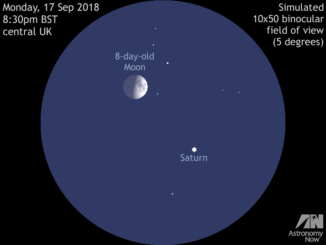
See the Moon and Saturn get close at dusk on 17 September
Skywatchers in the UK looking to the south-southwest at dusk on Monday, 17 September can see the waxing gibbous Moon just 1¾ degrees to the upper left of Saturn, the pair fitting comfortably in the same field of view of binoculars and small telescopes magnifying 25× or less. This is also a good night for spotting Titan, Saturn’s largest and brightest moon.
